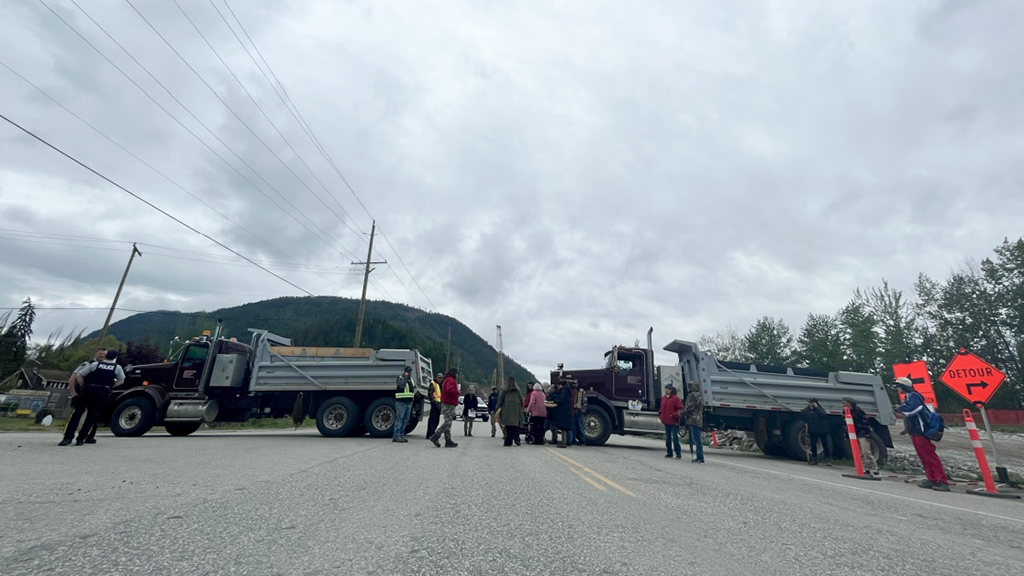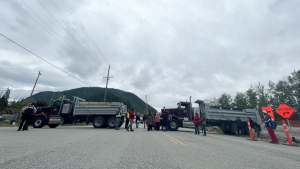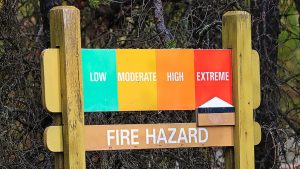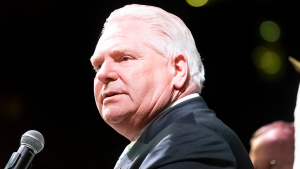B.C.’s R.W. Bruhn Bridge blockade, now resolved, has been the latest flashpoint in growing frustration from First Nations groups who claim they are being cut out of provincial infrastructure projects either through Community Benefit Agreements (CBA) or partnerships with unionized contractors.
The blockade, carried out over a couple of days by the Splatsin band and its Splatsin Development Corporation (SDC), part of the Shuswap’s Secwepemc Nation earlier this month, protested an exclusion from work with AEAC GP (an Emil Anderson and Aecon partnership), who are the principal contractors on the $260 million bridge replacement and highway project.
“We were promised opportunity,” claims Grahame Go, CEO of SDC, with a two-year potential work period. “They’ve given us just three months of meaningful work.”
The Splatsin are now seeking a renewed signed commitment from both the AEAC GP and the province.
Crown corporation BC Infrastructure Benefits (BCIB) provides unionized labour to infrastructure sites, drawing from 19 recognized building trades, with a CBA stressing inclusion.
BCIB executive director of stakeholder and community relations Greg Johnson said while BCIB employees are unionized, hiring provisions exists outside the CBA such as emergencies and skill shortages.
First Nations can also work for contractors.
“The workers are employed by the nominated contractor instead of BCIB and are exempt from the terms of the CBA, including union membership,” he said.

BCIB had issued SDC several permits to work for AEAC GP. SDC claims it has been sidelined as a cost-cutting measure and agreements were breached as AEAC GP removed SDC’s emergency transport vehicle and SDC trucks, caused disruptive shift scheduling and changes as well as violated a fuel contract.
But the Splatsin band claims the problem is deeper than the Bruhn site incident and there exists a pattern of side-stepping Indigenous commitments.
“Those operating under the BC Infrastructure Benefits model have found ways to manipulate rules, exploit loopholes and sidestep obligations — while maintaining the appearance of compliance,” said the Splatsin release. Â
The Splatsin urged the Ministry of Transportation and Transit (MOTT) to investigate their claims and “ensure the principles of reconciliation are not just talked about.”
Splatsin are not the only band with concerns regarding First Nations involvement on worksites. Splatsin claims other Secwepemc bands, including Adams Lake, Neskonlith, Skwlax te Secwepemculecw plus Splatsin, have raised workplace concerns to B.C.’s finance ministry in a joint-memo. Concerns include allocating undesirable work to First Nations, allowing employees to self-identify as Indigenous without verification, and allowing contractors to name their hires to exclude Indigenous workers.
A support letter from the Neskonlith Band said: “We share their deep frustration with the persistent issues surrounding contracts awarded to specific contractors, as well as the ongoing circumvention of established regulations through the BC Infrastructure Benefits process. It is particularly disheartening to see contractors bypass Indigenous communities, denying us meaningful participation in major development projects.”
When asked if the MOTT had any oversight in place to ensure First Nations on infrastructure projects fair treatment, ministry did not answer but sent an email on the blockade saying MOTT is pleased “the parties have developed a mutually agreeable solution to address issues raised.”
Independent Contractors and Business Association president Chris Gardner, an outspoken CBA critic, said any contract the First Nations entered into would need to co-exist with the BCIB’s CBA.
He called the blockade a “deeply troubling consequence of the B.C. government’s CBA framework – a failed, discriminatory policy that excludes the vast majority of B.C.’s construction workforce, contractors and Indigenous-owned businesses.”
There also exists no clear path as to whether the First Nations economic rights as set out by Article 26 of (United Nations Declaration on the Rights of Indigenous Peoples) over-rule provincial CBAs and how that might affect contractor-First Nation partnerships entered into to win contracts on their lands.
 “It is a mess that the government has created,” said Gardner, adding a CBA can run 400-pages or more.
”It is difficult, confusion and expensive to navigate.”
On Vancouver Island, picketing and blockades occurred in 2022 when BCIB refused to issue the Khowutzun Development Corporation (KDC) permits to work on the Cowichan hospital replacement project because its members were not unionized workers. The project was to be constructed on Khowutzun land.Â
 “It is all smoke and mirrors,” said Jon Coleman, whose First Nations non-union Jon-Co Construction was shut out of the work. He sees little benefits flowing to Indigenous people from CBAs although they purport to support First Nations.
Coleman, a KDC member, lobbied Victoria protesting the hospital exclusion. Both Premier David Eby and Adrian Dix stepped in, assuring KDC members would be allowed to work without unionizing.
Coleman said a “top-off” was added to the agreement, but it was only for a year and related to the trucking sector. It did little for Coleman, who was in excavation. Being shut out almost drove his company into bankruptcy as others came in to do the work, he alleges.
AEAC GP and the Splatsin did not respond to media requests for interviews, issuing only press releases.
“We are committed to building a strong, long lasting, and collaborative relationship with Splatsin and SDC based on our shared values,” said Simon Green, Aecon vice-president, after the blockade ended.











Recent Comments